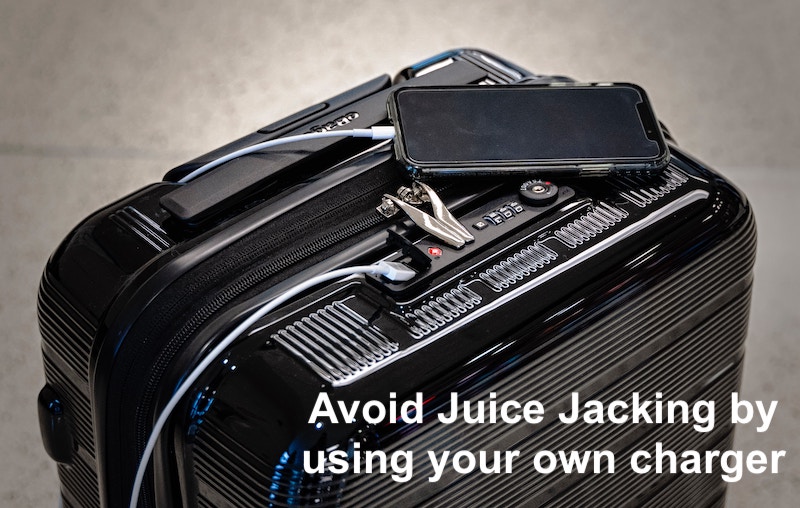
Imagine you're traveling and your smartphone is running out of battery. You're in a rush to send an SMS message, and you notice a public charging station nearby in the airport terminal. You plug your phone into the USB port of the charging station, but you don't realize that the USB port has been compromised by a cybercriminal who has installed a data-stealing device in a charging station.
As soon as you plug your phone into the USB port, the device starts transferring your contacts, emails, messages, photos, and other personal data out of your phone. The attacker may also install malware on your device and steal other sensitive data like your credit card information.
By the time you realize what has happened, the attacker has already accessed your data and can use it for identity theft, financial fraud, or other malicious activities. This is an example of how juice jacking can happen and why it is important to be cautious when using public charging stations in airports, hotels, and shopping centers.
What is Juice Jacking?
Juice jacking is a cyber attack that occurs when a hacker gains unauthorized access to a person's electronic device through a public charging station. The attacker can then steal data from the device or install malware that can compromise the security of the device and the data stored on it. This type of attack often happens when a user plugs their device into a public USB charging station in a public place such as an airport, coffee shop, or hotel. To avoid juice jacking, it is recommended that users avoid public USB charging stations and instead use wall outlets or bring their own portable charger.
How do you avoid Juice Jacking?
Juice jacking can happen to anyone if they are using public charging stations. Even if you carefully examine public charging stations, it is not easy to detect the data-stealing device that is tandemly connected to the charging port. To avoid juice jacking, you may use the following methods to charge your smart devices.
- Use your own charger: The safest way to charge your electronic device is to bring your own charger and use a wall outlet.
- Use a portable power bank: If you're on the go, a portable power bank can come in handy. These devices can be charged ahead of time and used to charge your phone or tablet without the need for a public charging station.
- Use a data blocker: A data blocker is a small device that you can plug into a USB port to prevent any data transfer between the device and the charging station. It allows power to flow through but blocks any attempts to steal data or install malware.
- Use a charging-only cable: Charging-only cables don't have the data transfer wires that are necessary for syncing data between devices. Using such cables can help protect your device from juice jacking.
- Avoid public charging stations: If possible, avoid public charging stations altogether, especially in high-traffic areas like airports, hotels, and coffee shops. If you must use a public charging station, make sure it is from a reputable source and avoid any that look suspicious or out of place.
Conclusion
Avoid using free charging stations in airports, hotels, or shopping centers to avoid juice jacking. Bad actors have figured out ways to use public USB ports to introduce malware and monitoring software onto devices and steal sensitive data from victims. The best way to prevent juice jacking is by carrying (1) your own charger with a USB port that plugs into an electrical outlet, or (2) your own portable power bank.
Share this post
Leave a comment
All comments are moderated. Spammy and bot submitted comments are deleted. Please submit the comments that are helpful to others, and we'll approve your comments. A comment that includes outbound link will only be approved if the content is relevant to the topic, and has some value to our readers.




Comments (0)
No comment